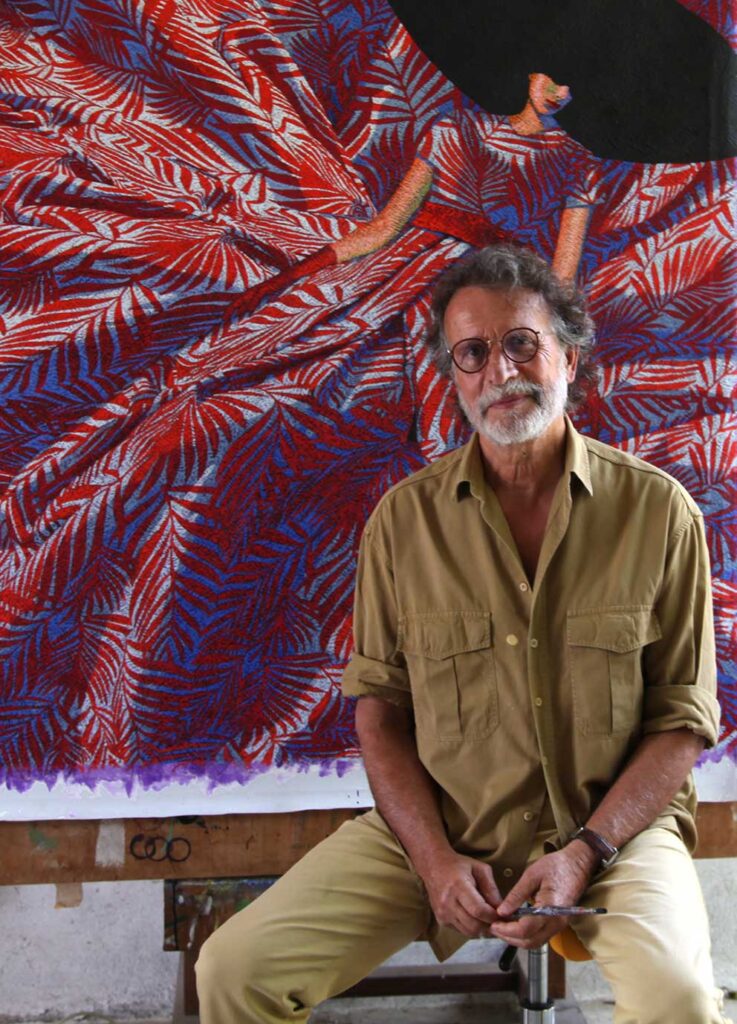
Yves Clerc, dès son jeune âge, fait ses premiers pas dans le monde de l’image grâce à la photographie, fortement influencé par le formidable élan créatif de la revue Vogue dans les années 1970-1980. Il collaborera notamment avec Yann Romain, photographe de mode.
Conjointement à la faculté de médecine, il suit des études à l’École des arts appliqués de Paris pour pratiquer le dessin et la bande dessinée sous la houlette de Yves Got, créateur du Baron noir.
Durant sa formation, il publie ses premières illustrations dans la presse médicale et participe au festival du théâtre universitaire de Nancy, qui déterminera pour une grande part la thématique de la représentation qui traverse son œuvre.
De 1975 à 1990, il publie ses dessins dans différentes revues (Pariscope, Autrement, etc.). Il abandonne la peinture abstraite pour aborder la peinture figurative dans l’atelier de Christian Zeimert – peintre « calembour- geois » – et dans un groupe de réflexion sur la « figuration critique », ce qui l’amène à repenser l’œuvre d’art, non pas uniquement comme concept, mais aussi comme objet. Au lieu du titre, il numérote chronologiquement chacun de ses tableaux pour souligner cette position.
Dès 1990, la galerie parisienne Charles Bailly l’accueille pour exposer régulièrement en France, en Europe et aux États-Unis. En parallèle, Clerc décore un défilé de haute couture à Moscou, expose ses œuvres dans la maison Hermès, est présent parmi les grands couturiers au jubilé du brodeur Lesage, dans des musées et de nombreuses foires d’art.
Il collabore aujourd’hui principalement avec la Bailly Gallery de Genève et travaille à Paris, parfois à Mexico, à Genève, et voyage régulièrement aux États-Unis.
Yves Clerc took his first steps into the world of images at an early age through photography, influenced by the very creative dynamic of Vogue magazine in the 1970s-1980s. He worked notably with the fashion photographer Yann Romain.
While attending medical school, he also studied at the École des Arts Appliqués in Paris, where he practised drawing and comic strips under the guidance of Yves Got, the creator of Baron Noir.
As a student, he published his first illustrations in the medical press and participated in the Nancy University theatre festival, which had an important influence on the theme of representation that runs through his work.
From 1975 to 1990, he published drawings in various magazines, including Pariscope and Autrement. He aban- doned abstraction to concentrate on figurative painting in Christian Zeimert’s studio, a painter who loved to integrate puns into his work, and was involved in a think tank on “critical figuration”. This led him to reassess the work of art, not only as a concept but also as an object. In place of titles, he began to chronologically number each of his paintings to highlight this position.
Since 1990, the Parisian gallery Charles Bailly has regu- larly hosted exhibitions of his work in France, elsewhere in Europe and in the United States. Concurrently, Clerc designed the set for a haute couture fashion show in Moscow, exhibited his works at Hermès and was present alongside top couturiers at the Lesage embroiderer’s ju- bilee, and his works have been displayed in museums and at numerous art fairs.
He currently collaborates mainly with the Bailly Gallery in Geneva and works in Paris, Geneva and occasionally in Mexico, and travels regularly to the United States.
